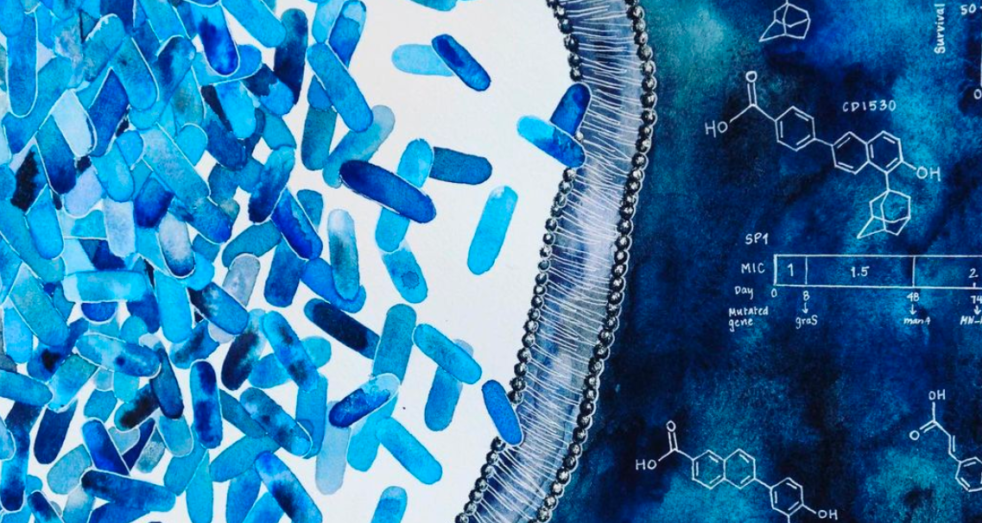The place of art at Tech is contested. Because Tech is a technology-based research institute, some students believe the arts should play only a small role on campus.
However, many Tech students enjoy the arts, and some students even want to see the administration add more art requirements into Tech’s STEM degree curriculums.
Many programs now exist on campus to promulgate a love for the arts. Tech Arts, for example, is part of the Division of Student Life and serves to promote campus arts experiences.
It hosts events onstage at the Ferst Center, maintains visual art around campus and creates opportunities for artist engagement and student creativity.
Events and programs hosted by Tech Arts this year include the Spring 2021 Clough Art Crawl, Traveling While Black virtual reality experience, Terminus Modern Ballet Theatre and many others. Crystal Phiri, third-year CS, first learned about Tech Arts when she attended a GOURD Art Club event. “We just drew and painted whatever we wanted,” Phiri said. “It was pretty relaxing.”
The vision statement of Tech Arts expresses that “Tech will be an internationally recognized destination that invites everyone to experience and benefit from the integration of arts with the learning and research that takes place across the Institute through performances, exhibitions, installations, residencies, and creative encounters.”
Tech Arts’s statement, along with its mission to place “art at the epicenter of supporting the Strategic Objectives of the entire Institute,” suggests that arts should take center stage on Tech’s campus.
Many student-run organizations seek to do just that by bringing music, dance, visual art, theater and other art forms into students’ lives.
Examples include dance groups, student media publications, musical ensembles and many others.
One student-run organization, Science.Art.Wonder (SAW), seeks to capitalize on Tech’s STEM-focused population to explore the intersection of art and science.
As an Atlanta-wide initiative centered at Emory and Tech, SAW matches artists and researchers to create art based on and inspired by scientific research.
The organization creates yearly exhibits both on campus and in Atlanta to showcase their unique pieces.
Many students at Tech understand the inherent connection between art and science.
“I think there is a big connection between art and science, math, and engineering,” said Katie Elliott, fourth-year ME. “In music, math is needed to line up the music, and science tells us what the notes will sound like and how they will sound together.
In biology, I think the way organisms grow is an artform. And in engineering, the creativity it takes to make parts or design a structure takes artistic abilities.”
Andrew Babbitt, fourth-year CS, agrees but feels hesitant in taking the combination of art and science too far.
“There is a connection, but when art becomes too intermixed with math or science, you get some weird results,” Babbitt said. “Sometimes it’s really cool, like using fractals in art. Other times it is annoying outside of specific uses, like music serialism.”
When asked if Tech should look into doing more to incorporate art into its STEM degrees, many students were open to the idea.
“I think that students just taking even one art class would help them overall,” Elliott said. “The benefits would be … a more well-rounded education, understanding people better who think differently than you and being able to solve problems in a creative way that you might not have thought of otherwise.” Phiri agreed.
“I think an attempt to encourage art could help STEM majors to be more creative and encourage new ways of thinking or expressing themselves,” Phiri said.
Babbitt also echoed similar sentiments, saying, “I think incorporating art into STEM programs can be beneficial in getting students to think in new ways … STEM is very focused on logic, whereas art can introduce more emotive means of thinking and can be very experiential.”
Despite the benefits, students also believe there could be negatives to incorporating art into STEM degrees at Tech.
“The downside would be that students would have less time to focus on their specific major courses that they will be using for the rest of their careers,” Elliott said.
Phiri pointed out another challenge: “I think taste [in art style] could be subjective, and it’s hard to grade.”
Overall, the consensus on art at Tech remains mixed.
“Ideally, Tech should look into expanding art options and requirements for students. But in reality, they should do no such thing,” Babbitt said.
“Frankly, I distrust Tech’s ability to make ‘good choices’ in terms of art, and I fear it will be predominated by styles I dislike and find little value in.”
Elliott considered the reactions of the entire Tech community.
“I think Georgia Tech should look into adding more art opportunities,” Elliott said.
“But I think there may be a negative response from students, alumni and faculty who do not have an appreciation for the arts.
I hope they would see the benefits of incorporating arts into education at Georgia Tech.”
It will be interesting to track the direction Tech decides to take in the future with evolving curriculums, especially regarding the arts.
